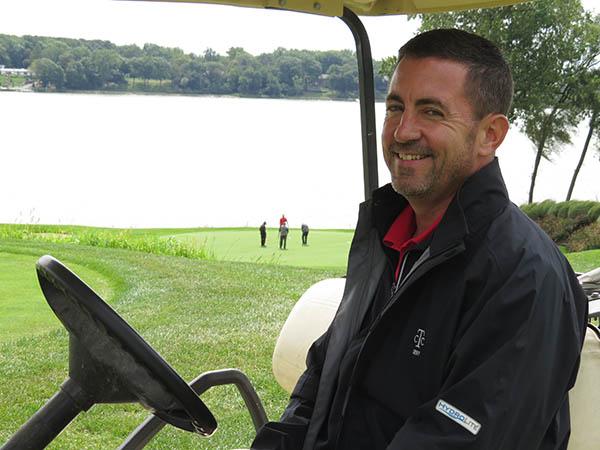When discussing turf stressors in the Midwest, nematodes typically do not come up in conversation very often. But, it is a discussion that is becoming more common.
 Don't tell that to Tim Glorioso, who has been struggling for ways to control stunt nematodes for much of his 17 years at Toledo Country Club, an 1897 Willie Park Jr. design along the Maumee River in northwestern Ohio.
Don't tell that to Tim Glorioso, who has been struggling for ways to control stunt nematodes for much of his 17 years at Toledo Country Club, an 1897 Willie Park Jr. design along the Maumee River in northwestern Ohio."I don't think we had a problem when I got here, but when I got here, I started a heavy topdressing program," Glorioso said. "That's when it became a problem. When you have that sand layer you have created a perfect environment for nematodes."
Shortly after he started building that sand layer at Toledo, Glorioso noticed occasional signs of stress he hadn't seen before. Symptoms appeared as yellowing, stressed turf. It wasn't until about seven years ago, after talking with turf consultant Brian Mavis, that Glorioso even considered nematodes.
"It was irregular. Something was going on, but I didn't know what it was," Glorioso said.
"Brian asked if I had ever checked for nematodes, and I said nematodes? We don't have nematodes in Ohio, "
A root sample sent to the University of Massachusetts revealed otherwise.
The presence of nematodes in Ohio and other northern states isn't all that rare, says Joe Rimelspach, Ph.D., turf pathologist at Ohio State.
Factors contributing to nematodes entering the conversation on a more regular basis, he said, are the loss of some control products, and, as in the case of Toledo Country Club, misdiagnosis.
"We are seeing a lot of nematodes this summer," Rimelspach said.
"It's not abnormal to have nematodes in Ohio, but I think one of the reasons were seeing so many is because we had some really strong products in the past, like Nemacur, that we've lost."
After Oct. 6, Nemacur will be gone for good in the United States. Nemacur sales were stopped in 2008, but the U.S. Environmental Protection Agency gave turf managers until Oct. 6, 2014 to use existing stock. That deadline was extended in September 2017.
Even when he learned he had nematodes at Toledo Country Club, Glorioso struggled to control them. Turf that showed increasing signs of stress summer after summer. And he and members of his team had to return to the course every afternoon throughout the summer to hand water the weakest areas.
"We had whole areas on greens wilting," he said.
"We had to come in every afternoon and syringe them. You couldn't go a day without it. It was a train wreck."
Recently, hes tried a couple of new products - Indemnify and Divanem - and his life has gotten much easier.
"I tried different products over the years, and nothing worked," he said.
"I think I've finally found something that works."
He is still testing greens every day with a TDR meter, but hes spending less time hand watering and believes he can cut that time even more.
Now, other turf managers around the area are calling him asking for tips on nematode control.
"We've probably cut our hand watering time in half," he said. "This is my first year, so I don't know yet how far I can go. I'm still afraid. I still go check them every day. I think we can cut even more if I had the nerve to just let them go."

